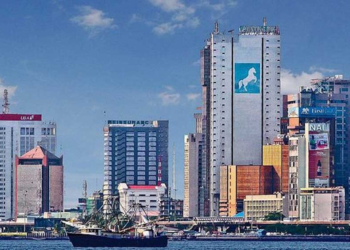The Nigerian banking sector is currently facing a liquidity crunch, with Deposit Money Banks (DMBs) and merchant banks resorting to increased borrowing from the Central Bank of Nigeria (CBN). This surge in borrowings, which reached N7.5 trillion in the first five months of 2023, reflects a significant 276% increase compared to the same period in 2022. The liquidity squeeze experienced by banks can be attributed to various factors, including the fallout from the new naira notes policy implemented in 2022. This blog post explores the implications of this liquidity crunch and its impact on the banking sector.
Reasons for Increased Borrowings:
The data from the CBN highlights that DMBs and merchant banks’ borrowings through the Standing Lending Facility (SLF) witnessed a substantial increase. The demonetization drive in the country triggered chronic cash shortages, leading to a 276% year-on-year surge in borrowings. Furthermore, a senior manager from a top-tier-2 bank disclosed that the CBN’s aggressive liquidity mop-up through the Cash Reserve Ratio (CRR) played a significant role in this borrowing trend. The CBN lends money to banks through the SLF at an interest rate of 100 basis points above the Monetary Policy Rate (MPR).
Role of Standing Facilities:
Standing facilities, which include both lending and deposit instruments, serve as avenues for liquidity management in the banking system. These facilities allow banks to invest surplus funds overnight and to address any shortfalls in the system at the end of each business day. The CBN provides the SLF as a short-term lending window for DMBs and merchant banks to access liquidity for their day-to-day operations. The increased utilization of the SLF indicates the pressing need for banks to alleviate liquidity constraints.
Implications and Challenges:
The redesign and introduction of new naira notes in 2022, along with the directive for DMBs to return existing denominations to the CBN, resulted in cash scarcity and disrupted the usual cash deposits from businesses and individuals. This scarcity, coupled with a range of challenges including insecurity, supply chain problems, rising inflation, and poor purchasing power, has further strained the banking sector. As a consequence, banks have become more cautious in extending credit to businesses, preferring to be debited by the CBN for falling short of the Loan-to-Deposit Ratio (LDR) limit. Managing risk has become a priority in an environment where various threats and uncertainties persist.
CBN’s Monetary Policy Measures:
The CBN has adopted aggressive intervention measures to address the liquidity crunch. This includes increasing CRR debits, which have risen significantly compared to the previous year. By reducing the amount of excess credit extension, the CBN aims to control the volume of money in circulation, mitigate inflationary pressures, and ensure that banks maintain adequate cash reserves to meet depositors’ demands. However, in the short term, this policy limits banks’ ability to generate profits from credit extension.
Bottom Line:
The liquidity crunch in the Nigerian banking sector has compelled DMBs and merchant banks to rely heavily on borrowing from the CBN. The increased borrowings, driven by cash scarcity and other economic challenges, reflect the need for banks to manage risk and maintain sufficient liquidity. The CBN’s aggressive intervention through the SLF and CRR debits demonstrates its commitment to addressing the liquidity squeeze. However, these measures also have implications for the profitability and lending capacity of banks. As the Nigerian economy grapples with various issues, finding a balance between managing liquidity and promoting credit extension remains a crucial challenge for the banking sector.










